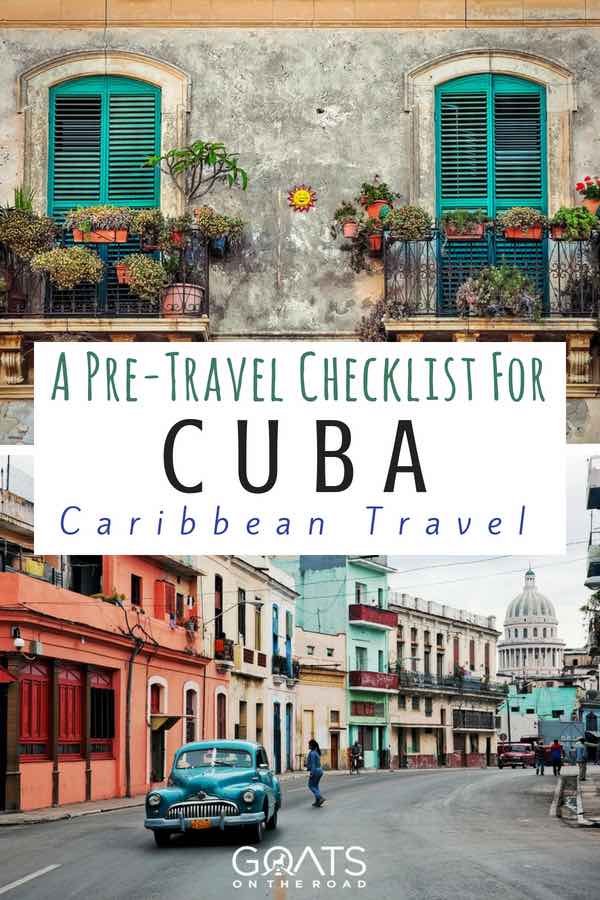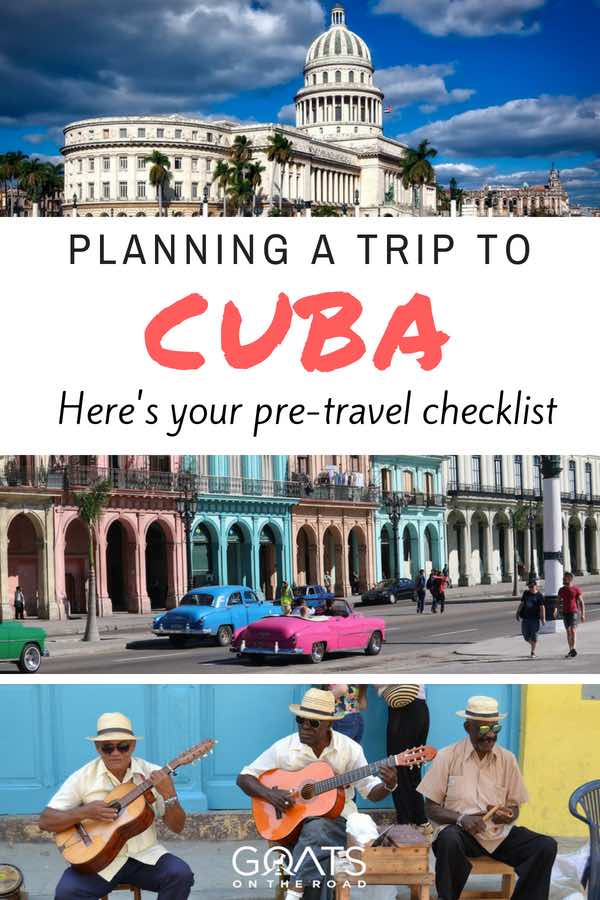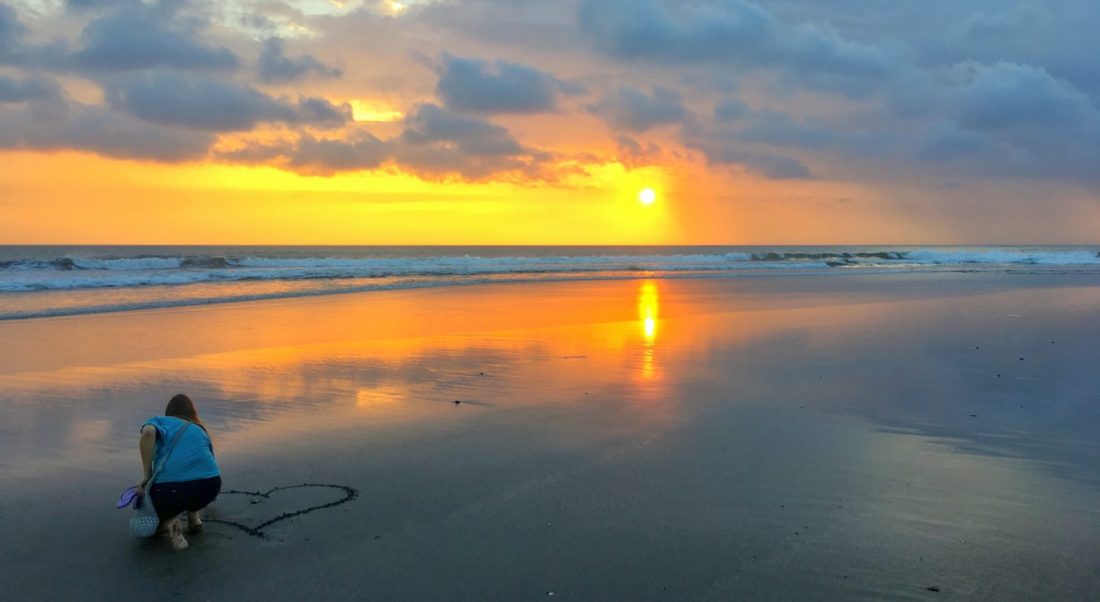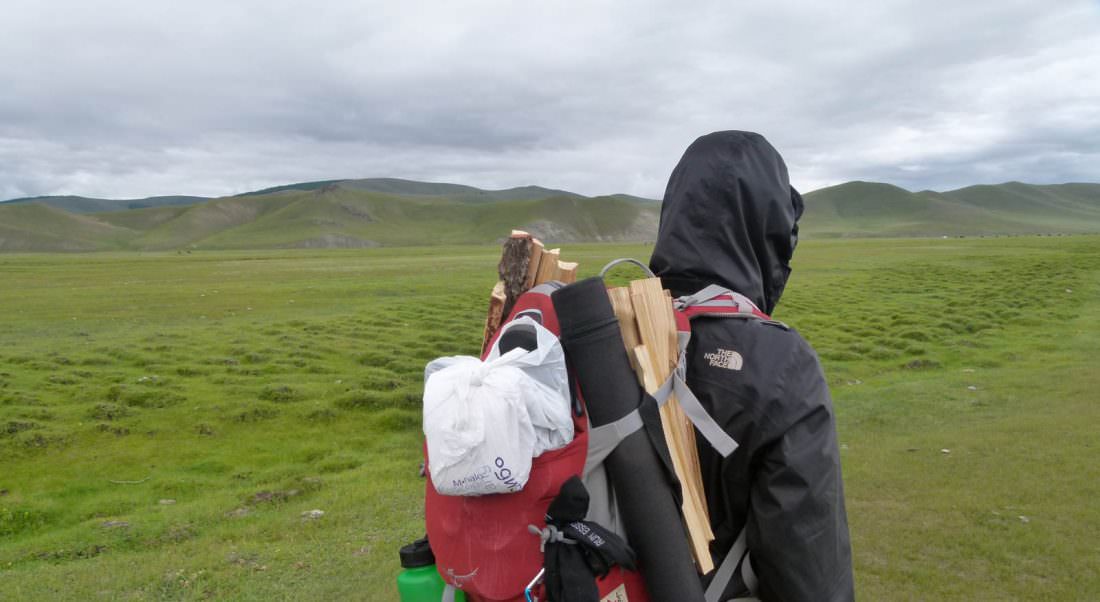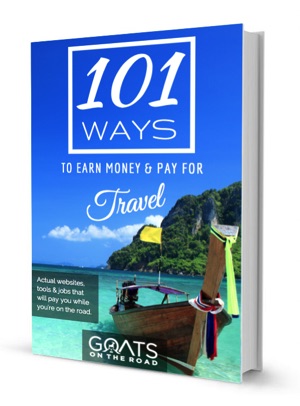Planning to travel to Cuba isn’t as simple as preparing for a trip to the rest of Latin America and the Caribbean. There are many things to think about before heading off to this tropical paradise. We’re travelling to Cuba in just a few days and for us, as Canadians, these are the pre-trip preparations and planning that we’ve had to do:
Purchase Travel Insurance
It’s always a wise decision to have travel insurance when going abroad, but if you want to enter Cuba, it’s actually a legal requirement that you have insurance and you’ll be asked to show proof of policy at the airport.
Update: January, 2016
As of January, World Nomads Insurance now offers coverage for Cuba! Well, for residents of the UK, Australia, South Africa, and many more nations they do.
They do not insure Canadians for Cuba.
We’re considered expatriates and therefore had to book a different (and more expensive) policy. We booked through Travel Cuts and the policy is through TIC Insurance. Travel cuts also offers regular travel insurance policies.
Update May 22/15: We weren’t asked to show proof of insurance when we arrived at immigration. However, other travellers from Israel and Japan were asked. The Japanese tourist didn’t have any coverage and was forced to purchase an expensive policy at the airport, at $5/day. We still recommend getting travel insurance before taking off.
Book Your Flight
If you’re flying from Latin America, there are a few airlines that you can consider:
AeroMexico – Flies from many countries, with flights going via Mexico City. We’ve flown with AeroMexico in the past and the airline and service was great.
Interjet – Flights from Mexico.
Cubana, Avianca, Copa and Taca Airlines have daily flights out of many hubs in Central and South America.
North America and Europe:
CanJet, Air Transat, Air Canada and WestJet – Flights from Canada.
Aeroflot, Air Berlin, Air Europa, Air France, Air Italy, Condor (to name a few) – Offer regular flights from many parts of Europe.
Check out this Forbes article which states that direct flights are now available from New York, Tampa and Miami, although American travellers still must fall under one of the twelve categories of authorized travel.
We suggest looking on booking engines such as eDreams.com, Kayak.com and Skyscanner.net to find the best flights.
This is our itinerary with Copa Airlines which we found on Kayak’s booking engine:
Guatemala City (Guatemala) -> Panama City (Panama) -> Havana (Cuba)
Havana (Cuba) ->San Jose (Costa Rica)
NOTE: Always clear your cache when booking flights, or, open in an “incognito” tab. Booking websites remember your searches and more often than not, they will raise the prices on your ticket!
Look what happened to us when booking to Cuba:
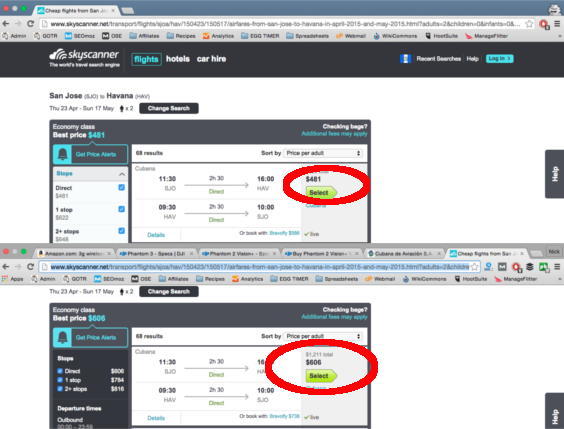
We searched for our flight and it showed up as $481. The next day we went online to pay for the flight and it came up as $606! So, we opened the website in an incognito window, and there was our original price of $481. What a scam.
Banking and Budgeting
If your bank or credit card is issued in the United States, or through an American banking company, it will not work in the ATMs in Cuba. We have been told that our TD Canada Trust debit card and our TD Visa Credit Card will work for withdrawing local currency, but we also plan to bring some Euros to exchange if needed.
Update May 22/15: Yes, our TD Canada Trust Debit card worked at the ATM machines. Note that there is a 3% charge for using the ATMs in Cuba! Factor that into your budget.
Remember to have enough cash in your bank account for the amount of money you plan to withdrawal at the ATMs. Performing your regular online banking transfers won’t be so easy in Cuba, as accessing wi-fi and internet is very difficult, slow and expensive.
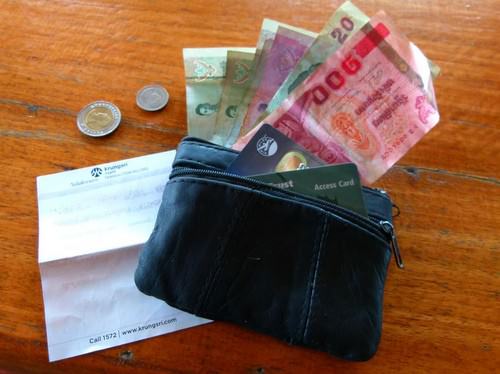
Also, remember to contact your bank and tell them you will be using your Debit and Credit cards out of country. Again, if they freeze your account, it will be very difficult to reactivate while you’re in Cuba.
Euros, Canadian Dollars and British Pounds are the most commonly accepted currency for exchange, with US dollars being the worst. If you want to swap American Dollars for Cuban Convertible Pesos, be aware that you will be charged an extra 10% fee for changing this currency. Also note that Australian Dollars aren’t accepted.
To be safe, it’s important to have a varied combination of currency when travelling. We plan to have our debit card, credit card, US Dollars and Euros. We’ll exchange the Euros (and dollars if we absolutely have to) at the money exchange booths in Cuba.
Update May 22/15: Money is exchanged at changers called Cadeca, which can be found in the cities. If you are coming from Canada, England or Europe, you won’t lose any money on exchanging your home currency, as there isn’t any fees at the money changer! For us, we lost a lot of money – when using our ATM card, we were charged 3% by the machine, and we’re waiting to see our end of the month bank statement to see if TD Bank charged us for using the machine as well.
We also decided to bring Euros with us and had to take Guatemalan currency out of the ATM in Guatemala, then change it over to Euros. We lost money two times there on the exchanges.
So, coming from a country other than your own, expect to pay ATM fees and lose out on conversions!
We’re budgeting ourselves $100 Canadian dollars/day while we’re in Cuba. Hopefully this amount will be a bit high, but we want to make sure we have enough to cover our expenses while we’re there. Our friends over at Never Ending Voyage have created a budgeting tool called the Trail Wallet App. You input your expenses every time you purchase something (water, food, accommodation, bus, etc.) and it keeps track of your spending throughout the day. It also lets you know (at the end of your trip) which percentage of your spending went towards which category of items.
We’ve just downloaded it and are excited to give it a try when we’re in Cuba!

Update May 22/15: The app was awesome and we highly recommend using it. Our average was $67.75 USD / day for the two of us. However, that’s without paying for accommodation. I would add on another $25 USD / day for that.
The Cuban Currency
The Cuban Convertible is pegged at the US Dollar 1:1.
The money situation in Cuba is really confusing – there are two currencies used! The Cuban Convertible (CUC$) is the currency that you’ll be using for almost all of your purchases (accommodation, transportation, restaurant meals, bus tickets, internet), while the Cuban Peso (CUP$) is the currency that the locals are paid in, and the one that they most often spend. Street-food, small snacks and food at local markets will be charged in CUP.
Certain items can only be paid for using CUC, meaning that locals often can’t purchase many items.
1 CUC = 1 USD
1 CUC = 25 CUP
We plan to have the equivalent of $10 USD in Cuban Pesos (CUP) on us each week, as we’ll use that currency to buy street food and smaller items from the market. Apparently, a small cheese pizza from a street vendor will cost us 5CUP, which is the equivalent of $0.20 USD!

Booking Accommodation
Casa Particulars (private homes) are guesthouses/homestays in Cuba. You’ll be provided with a room in a family’s home, a private bathroom and the option for homemade meals. But more importantly, you’ll be living with locals and will be treated like family!
Why would you even consider a hotel when there are homestays like this available?
We usually like to book our accommodation ahead of time when travelling, but in Cuba, booking engines such as HostelWorld.com, HostelBookers.com and Booking.com don’t offer any listings for the country…however, HostelsClub.com does! It has a wide selection of hostels, guesthouses and casas available.
We’ve partnered up with HostelsClub and will be staying in some lovely casa particulars around the country, this is a picture of our first one in Havana…we’ll have to take better photos when we’re there 🙂 This casa has excellent reviews on TripAdvisor.com and also on the hostel booking site.

Update May 22/15: Casa particulars are the way to go! The families we met were very kind, the rooms were spacious and clean and the homecooked meals were delicious.
Tourist Card/Visa
To enter the country, you will need to have a Tourist Card. If you’re travelling on a tour, this will usually be included in your package. However, if you’re travelling independently (like we are), then you will need to sort this out yourself. If you do decide to go on a tour, check out Esencia Experiences for tailor made holidays in Cuba.
We suggest contacting the airline that you booked through to figure out how to get this card. We called Copa Airlines who advised us that the card will be available for purchase at the airport during our 1 hour layover to our connecting flight in Panama City. It’s possible to purchase the Tourist Card at the Havana airport when you arrive, but there is a risk that you won’t be able to board your plane to Cuba without having this card. It’s best to get it in advance if possible.
The card costs $20 or $25 USD depending on where you buy it. This card will be stamped by the immigration officials upon your arrival and departure. You will keep half of the card, and the immigration official will keep the other half. Make sure you don’t lose your part of the card or you’ll have to pay 15 CUC to replace it, and it will most likely be a long and complicated process.

Update May 22/15: We were able to purchase this tourist card in Guatemala City (the first leg of our journey). We purchased it right at the counter that we checked-in at. It cost $20 USD.
Packing
For us, we don’t have to change our packing list for a trip to Cuba, because we carry everything we own on our backs! However, some useful items to pack are:
- Hiking shoes and sandals (there are some incredible hikes and pristine beaches)
- Loose-fitting, breathable clothing ( the humidity levels are quite high in Cuba, dress accordingly)
- Pants (many nightclubs, bars, and shows require you to wear pants – no shorts allowed)
- Bathing suit
- Toiletries ( we’ve heard that basic items like shampoo, toothpaste, sunscreen and deodorant are hard to find, and they’re expensive)
- Medical / first aid items (again, hard to find at the shops)
Check out some of our packing lists here:
The Complete Travel Packing List For Women
The Complete Travel Packing List For Men
Ultralight Travel: Revamping Our Backpacking Gear
First-Aid Kit Checklist For Backpacking
Update May 22/15: Many of the small pharmacies in the cities had toiletries available and they weren’t as hard to find as we had thought they would be. The only other thing we wished we had packed were gifts for the casa owners/families that we met. Luckily, we still had some Canadian stickers on us so we gave those out, but having something more substantial from our home country would have been nice to give away.
Get Going!
Planning and preparing for a trip is all part of the fun. Just make yourself a list and check off completed tasks as you go. When we return from Cuba, we plan to update this list and make any additions, or deletions as needed. There’s not a whole lot of information on the web for independent travel in Cuba, and we plan to provide you with lots of information when we get back.
Adiós!
Have you travelled to Cuba? What are we missing from this list? Share with us below!
Lead Image By: Never Ending Voyage
Like This Article? Pin it!

